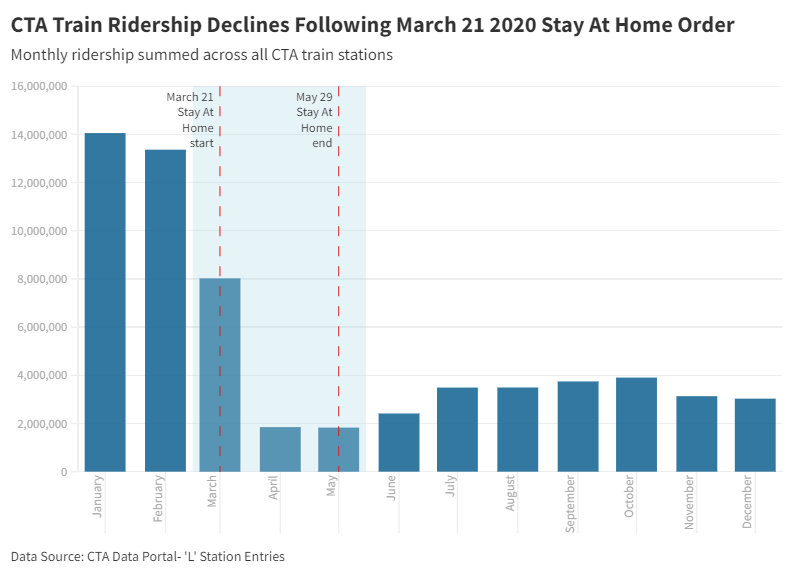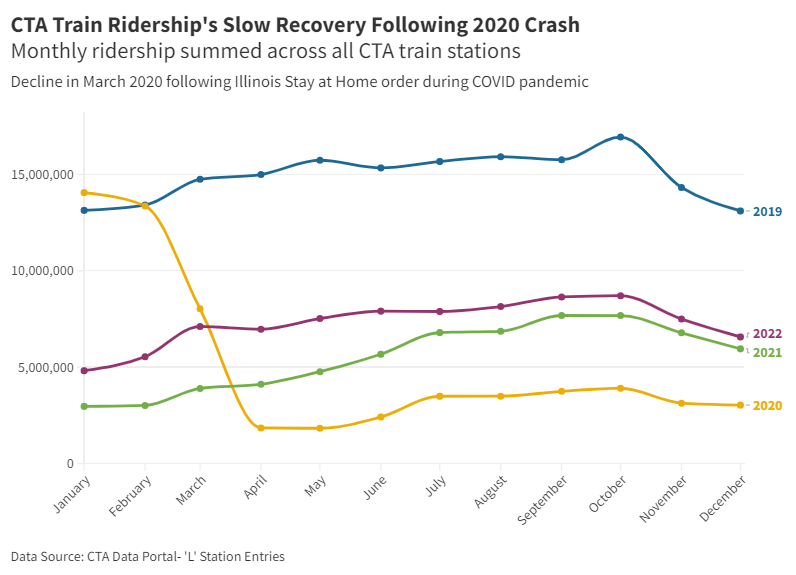by Rob Reid
25 June 2023
(16 October 2023 revised design and map)
See GitHub repository for methodology
Ridership on Chicago's CTA trains dropped sharply following the arrival of the COVID-19 pandemic and a subsequent stay-at-home order issued by the State of Illinois in March 2020. As reported by the CTA, Chicago retained less than a third of its previous year ridership in 2020, a trend comparable to other cities including New York, Boston and Philadelphia.
Following the introduction of vaccines in 2021 and lifting of a statewide mask mandate, ridership recovered to nearly half its pre-pandemic levels by 2022.
But that recovery has been uneven. Data acquired from the CTA show that Suburban Oak Park blue line and some downtown loop stations saw little more than a third of pre-pandemic ridership by 2022. In contrast, the five stations sustaining the most ridership are all on the Pink Line-- a train which serves predominantly black and Hispanic working-class neighborhoods.
A report by the Urban Institute in late 2021 tracked similar patterns in San Francisco, New York, and DC, noting that stations in communities with more non-white residents, lower median incomes, and more working-class jobs retained more riders. Chicago's Pink Line cuts through Lower West Side, South Lawndale, and North Lawndale, which match these characteristics.
Data analysis by Rob Reid. For a technical background on this project, see my GitHub repository

